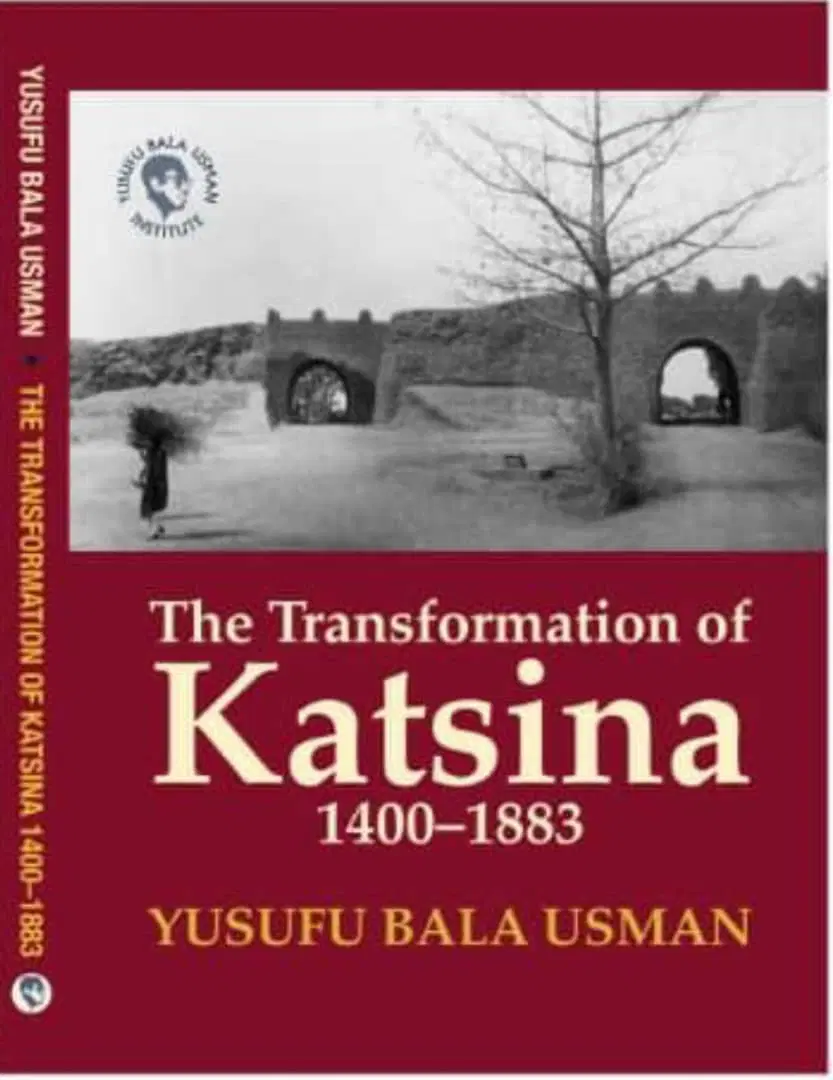After years of being out of print, Yusufu Bala Usman’s historical masterpiece, The Transformation of Katsina, 1400-1883 (TTK), is back on the market, boasting a stunning new cover design and binding. This re-publication marks the 19th memorial anniversary of Usman’s passing on September 24, 2005.
Originally published in 1981 by Ahmadu Bello University (ABU) Press, the new edition has been republished by the Yusufu Bala Usman Institute (YBUI) in Zaria, 2024, after acquiring the copyright from the original publisher. This initiative aligns with the Institute’s mission to disseminate Bala’s writings to a broader audience, complementing their republishing of other critical works such as The Manipulation of Religion in Nigeria, For the Liberation of Nigeria, and Nigeria Against the IMF.
The YBUI edition features enhanced typography and layout, imagery, and color palettes. Its new front cover showcases a striking image of Kofar Guga, the historic city gate of Katsina, symbolizing centuries of significant encounters in precolonial history. As the oldest city gate and a key tollgate for merchants, Kofar Guga played vital commercial and strategic roles in the region’s history.
Additionally, the back cover design includes a brief biography of the author, a summary of the book, and a decorative image of a Tuareg camel’s hair blanket, enhancing its aesthetic appeal.
A Timeless Classic
The Transformation of Katsina has transcended time and advances in historical writing, establishing itself as a standard text in Katsina history and earning the moniker “the Bible of Katsina history.” Its influence is profound, having set a high benchmark for historiographical excellence that is difficult for subsequent works to surpass.
While numerous authors have explored the history of Katsina over the last six centuries, the groundbreaking findings of TTK have rendered further historiographical advancements relatively marginal. The book is celebrated as one of the finest examples of historical scholarship in Nigeria.
Contextualizing the Work
In this retrospective review, the focus is on the epistemological impact of TTK rather than a detailed content analysis. It is crucial to revisit the historiographical context of the book’s conception and writing. Between the 1960s and 1970s, a group of historians at the Department of History, A.B.U. Zaria, led by the late Professor Abdullahi Smith, initiated a new tradition of historical writing that contested the prevailing historiography of state formation in northern Nigeria.
The Smithian approach exposed the fallacies of a dominant racist anthropological paradigm that portrayed the histories of African precolonial states as mere movements of tribes and races devoid of agency. Colonial historiography had denied the Katsinawa their historical agency and denied them the role of active historical actors.
While Abdullahi Smith pioneered this innovative approach, it was Bala who effectively deepened it. He utilized it to counter the prevailing racist interpretations promoted by Eurocentric historians like Heinrich Barth, H.R. Palmer, R.W. Hull, and M.G. Smith, who analyzed ethnic categories like Hausa, Fulani, Habe, Kanuri, and Tuareg. Bala’s primary intellectual goal in writing TTK was to determine whether the history of Katsina was fundamentally comprised of racial and tribal movements and conflicts.
Conclusion
The return of The Transformation of Katsina to the market not only honors the legacy of Yusufu Bala Usman but also reinforces the importance of understanding and reclaiming the historical narratives of African societies. As this classic work becomes available again, it promises to enlighten a new generation of readers about the rich history and complexities of Katsina and its people.

